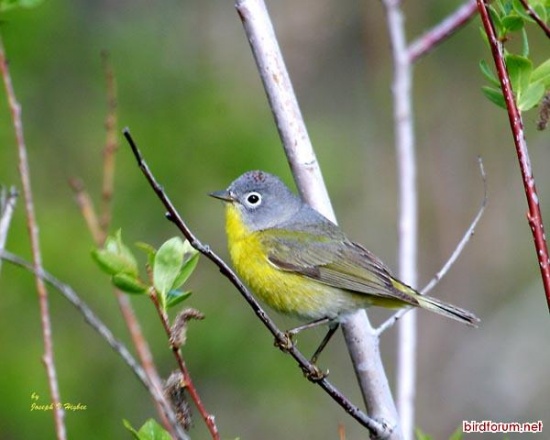- Oreothlypis ruficapilla
Vermivora ruficapilla
Identification
4 inches. Thin, very pointed bill, white eye ring, yellow throat, breast, and undertail coverts, white belly, olive upperparts, grey head; the head of female and immature is duller, more olive.
Variation
Eastern birds have the mantle green while the mantle is greyish in western subspecies.
Distribution
Canada and northeastern United States, from central Alberta east to central Quebec south to northern Minnesota, Michigan, New York and Connecticut as well as along the Appalachians south to West Virginia; Western United States, from British Columbia and southwestern Saskatchewan south to southern California. Found in migration anywhere in the United States except rare in Montana, Wyoming and Florida.
Taxonomy
Two subspecies are recognized[1]:
- O. r. ruficapilla
- O. r. ridgwayi
It was formerly included in Vermivora.
Recent results indicate that the two subspecies may not be each others closest relatives (Virginia's Warbler intertwined).
Habitat
Open mixed woods and bog habitats. Riparian woodlands in the west.
Behaviour
They build an open cup-shaped nest on the ground under shrubs.
Diet includes insects.
References
- Clements, JF. 2009. The Clements Checklist of Birds of the World. 6th ed., with updates to December 2009. Ithaca: Cornell Univ. Press. ISBN 978-0801445019.
- 51st supplement to the AOU checklist of North American birds
- Birdforum thread discussing the evidence for splitting Nashville warbler




